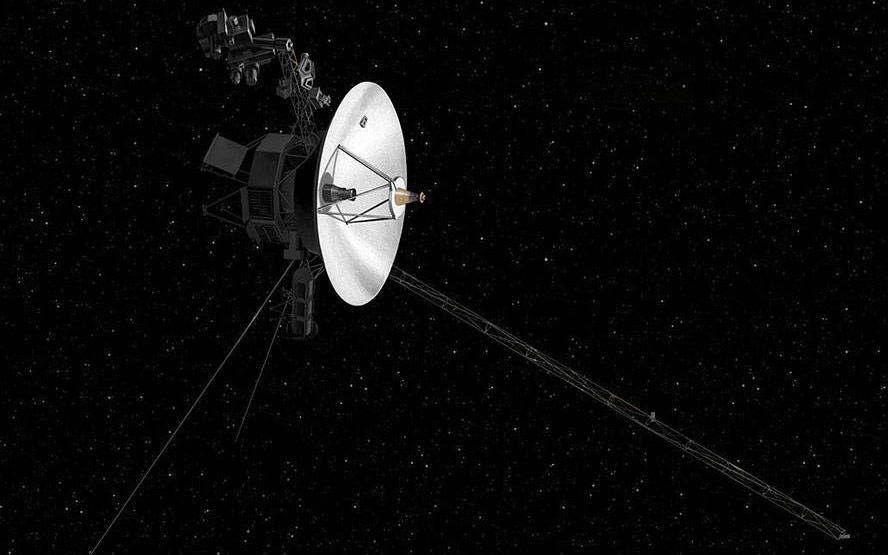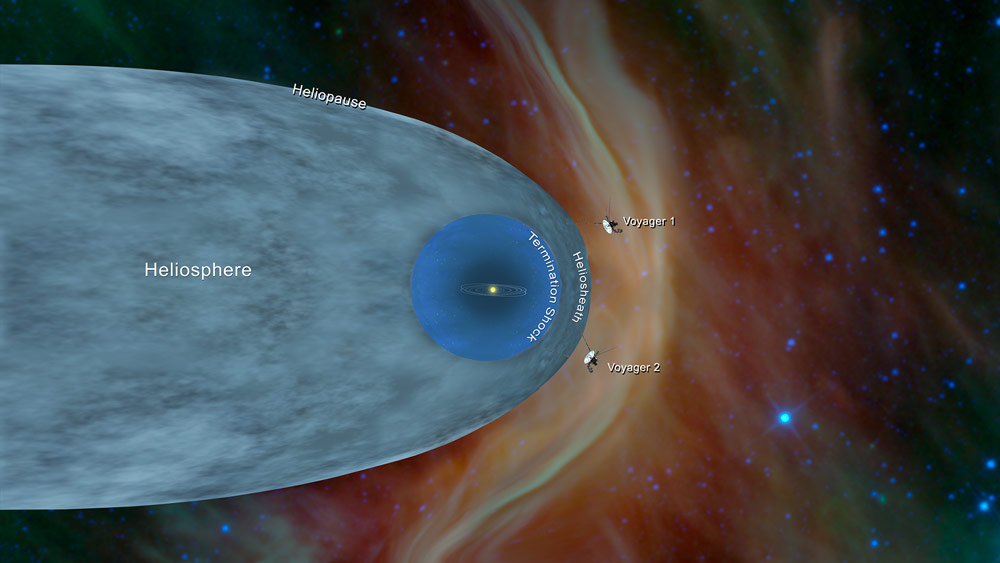Solar wind protects us from cosmic rays
Startling discoveries from the Voyager 2 space probe

In 1977, NASA launched its two Voyager space probes. Thanks to them, we know so much more about the outer planets, including Jupiter and Saturn (Voyager 1 and 2), and Uranus and Neptune (Voyager 2). Recently, they have reached interstellar space—some reports say they have left the solar system. In particular, Voyager 2 reached interstellar space on 5 Nov 2018, over six years after Voyager 1. They have also taught us much about the sun itself.
Solar wind
The sun’s super-hot atmosphere, the corona, emits the solar wind, a stream of extremely fast (250 to 750 km/s) charged particles. This wind pushes against the particles in comet tails, causing them to point away from the sun. Fortunately we are protected from the particles in the solar wind by earth’s strong (albeit decaying) magnetic field, which traps them. We see the results as the aurorae, which are most prevalent near the poles in the wintertime.
Some might ask, why would God make such a dangerous sun? But in reality, our sun is ideal for life here on earth. First of all, it is remarkably stable. It is very quiescent compared to most stars of its type. And the latest Voyager 2 findings show that the powerful solar wind produced by our sun is an important design feature.
Solar system boundary?
The Voyager probes discovered that the solar wind was still blowing at enormous distances, many times further than any planets. We knew the solar wind would be slowed down by the gases of the interstellar medium. We knew this would happen, but we did not know how far out the solar wind would go.

The boundary is called the heliopause, and the Voyager probes have told us that it is over 121 astronomical units (AU) from the sun (1 AU is the earth-sun distance, 150 million km or 93 million miles). They also found that the distance is not constant. Rather, according to Voyager project scientist Ed Stone, of the California Institute of Technology in Pasadena, “The heliosphere itself is breathing in and out.”1
This encloses an immense ‘bubble’ around the sun called the heliosphere. Some call the heliopause the boundary of the solar system. However, there are some solar system objects that travel past this boundary and back, so it is not really the ‘edge’.
The sun’s gravity is still dominating at distances far larger than the heliopause. E.g. the planetoid Sedna is about the size of Pluto and is thought to travel to over 900 AU away from the sun at the maximum extent of its highly elliptical orbit, and the hypothetical Oort comet cloud (the supposed source of long-period comets) is claimed to be 2,000 to 200,000 AU.
The extent where a body’s gravitational field dominates all others is called the Hill sphere or Roche sphere (not to be confused with the Roche limit). The sun’s Hill sphere can be considered the real boundary of the solar system, and could even be a light year or more in radius.
Importance of the solar wind

A year after Voyager 2 crossed the heliopause, scientists had a chance to analyse its findings.2 They found that, as expected, the plasma density was higher outside this boundary. There are many more high-energy cosmic rays here, which make up a significant proportion of the ‘plasma’ in interstellar space. These are extremely energetic particles, therefore dangerous to us, and many come from supernova explosions of massive stars. Also as expected, the number of solar wind particles plummeted.
National Geographic summarizes these amazing findings:
Based on Voyager data, this bubble extends about 11 billion miles from the sun at its leading edge, surrounding the sun, all eight planets, and much of the outer objects orbiting our star. Good thing, too: The protective heliosphere shields everything inside it, including our fragile DNA, from most of the galaxy’s highest-energy radiation.3
That is, from our perspective inside the heliosphere, there are far fewer extremely energetic particles because the lower-energy particles jetting outward from the sun are creating a ‘shield wall’ for the solar system. So it turns out that the heliopause is actually very important.
References and notes
- Cited in Wall, M., Voyager 2’s trip to interstellar space deepens some mysteries beyond our solar system, space.com, 4 Nov 2019. Return to text.
- Voyager 2 illuminates boundary of interstellar space, jpl.nasa.gov, 4 Nov 2019. Return to text.
- Greshko, M., Interstellar space even weirder than expected, NASA probe reveals, nationalgeographic.com, 4 Nov 2019 [Emphasis added]. Return to text.



Readers’ comments
Comments are automatically closed 14 days after publication.